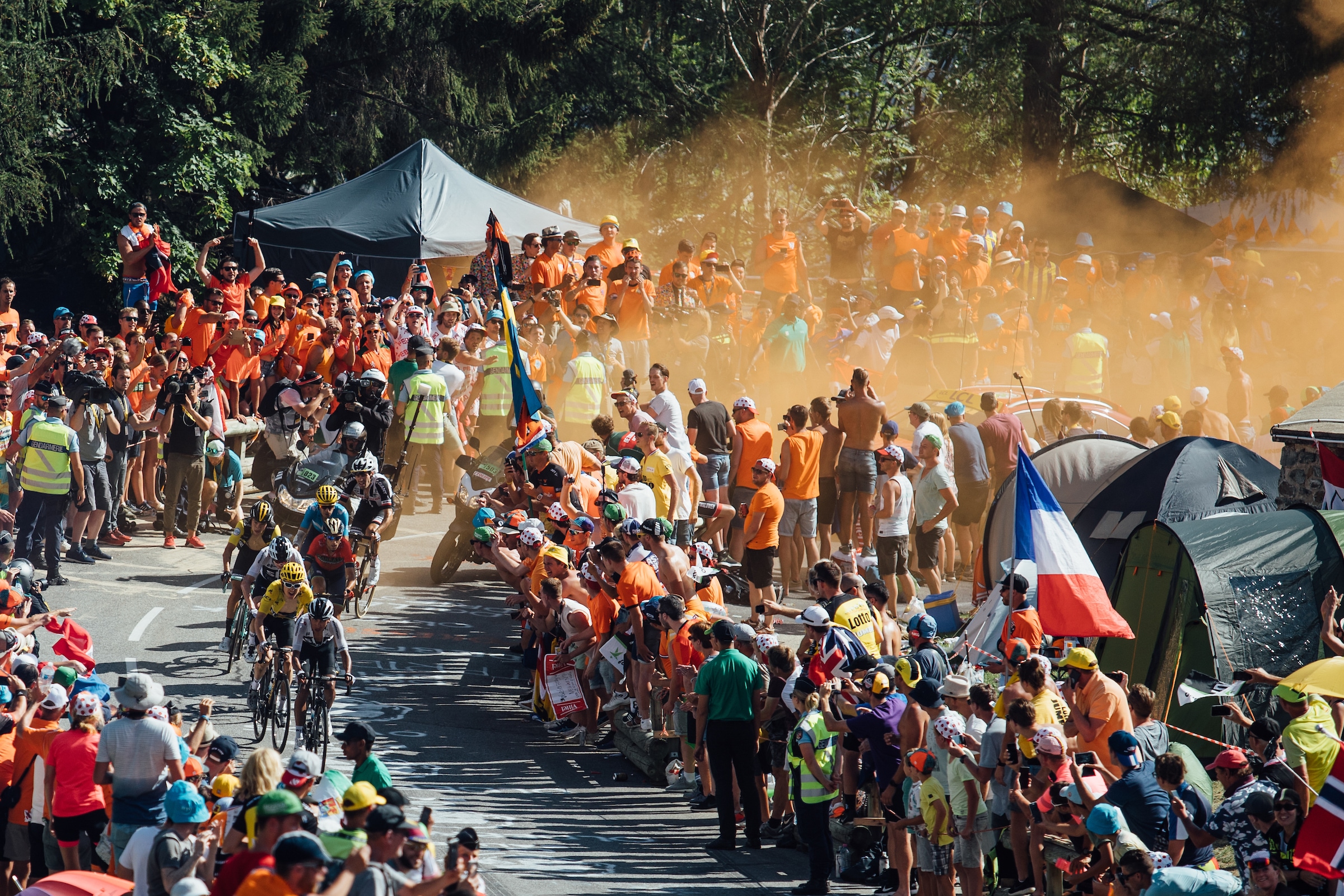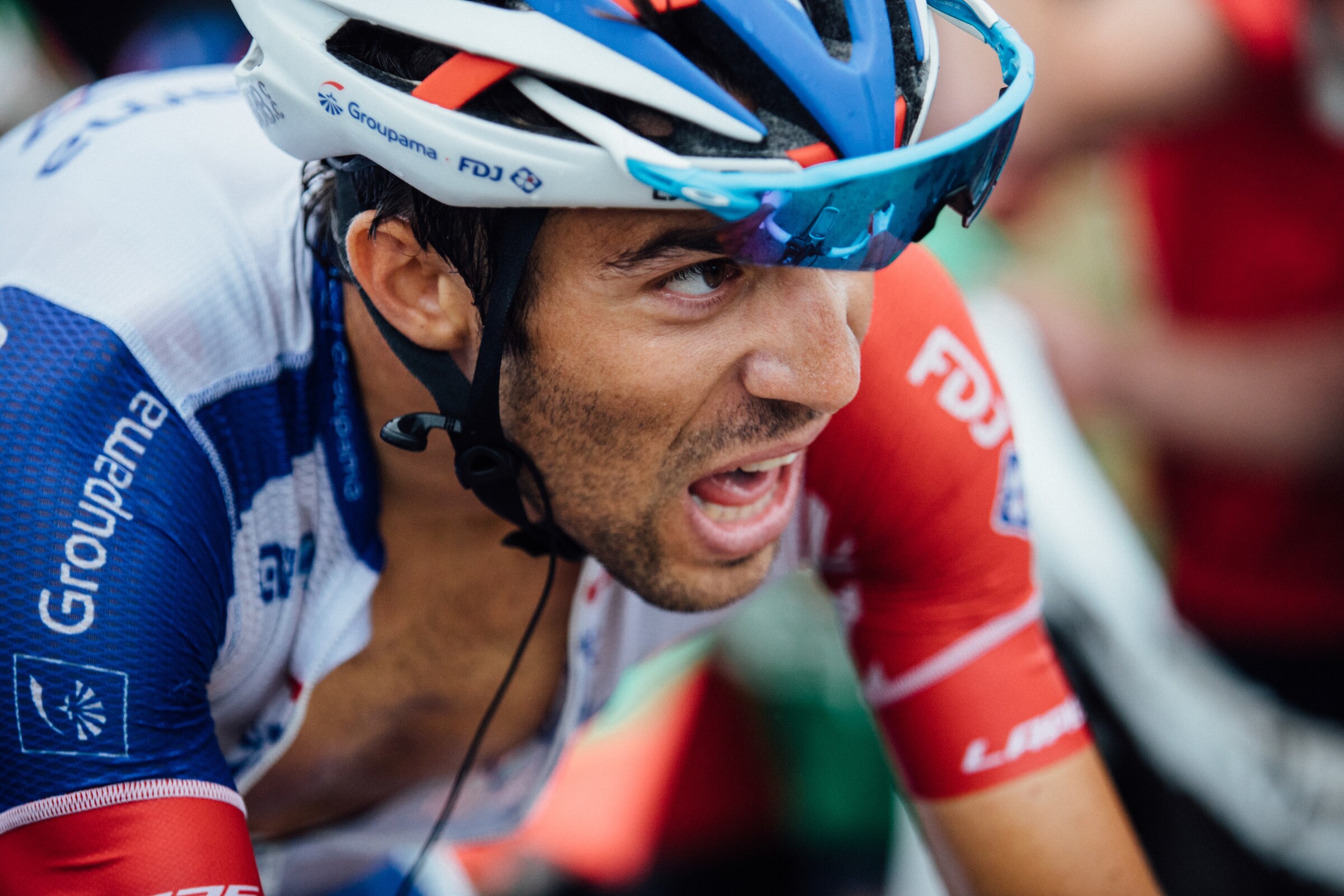Tour de France 19’ – The Lowdown
Photography: Chris Auld
The Parcours
Edition 106 of the Tour de France kicks off in Brussels on Saturday 6th July, to finish in Paris on the 28th July. In its initial week, La Grande Boucle takes in a summit finish on the steep and partly unpaved La Planche des Belles Filles, while the Pyrenees are included in the second week and the famous Alps in the final week. The route is tailor-made for climbers.

Week One – Stage Standouts
The Tour de France circus will move the hype and chaos to the central square of Brussels for the opening stage. The race will head up the Wall of Geraardsbergen and Bosberg, both iconic in the Flemish Classics. It will head back to Brussels via Charleroi, Villers-la-Ville and Sint-Pieters-Woluwe. It will be particularly special when the peloton moves through Sint-Pieters-Woluwe, as Eddy Merckx spent his youth here. In 1969, the Cannibal also took his first maillot jaune in the same place he spent his youth.
The second stage consists of a team time trial. The undulating course starts at the Royal Palace and winds its way through the boulevards of Brussels, which are mostly wide and straight, before finishing near Atomium. The teams contesting for the overall general classification will be nervous. They’ll need to ensure they keep their top men secure but within striking distance of the other contenders.

The sixth stage heads up to a summit finish at La Planche des Belles Filles – a climb that’s a Tour favourite. This time around, however, it will be even harder than previous years: the tour organisers have added an extra kilometre of gravel road to the climb, which is 7km and sits at 8.7% gradient with the final ramps hitting 20-24% gradient. Expect exceptional performances and explosions – it has no mercy!
The eighth stage has hills on the menu as it winds its way through Beaujolais wine region, tackling numerous punchy climbs including: Croix de Montmain, Croix de Thel, Croix Paquet, Côte d’Affoux, Côte de la Croix de Part, Côte d’Aveize and Côte de la Jaillière, before sprinting into Saint-Étienne. This will no doubt hurt the legs, thanks to 3,800 metres of ascending elevation!
The ninth stage will celebrate Bastille Day. You can expect a Frenchman to be in the early morning breakaway, no doubt. The break will be hoping to succeed, but they will need to be super motivated and have some good time gaps. The Mûr d’Aurec-sur-Loire, for example, can crash the breakaway’s hope for glory. The final selection will be made on the Côte de Saint-Just (3.7km at an average of 7.3 %), at 13km from the finish at Brioude.
Week Two – Stage Standouts

In its second week, the Tour de France enjoys the backdrop of the Pyrenees. Spectacularly high mountains, and a chance to shake up the overall general classification, are on offer.
After a rest day, the riders will tackle stage 11, which travels from Albi to a likely sprint finish in Toulouse. This will be a good chance for the sprinters to get some glory before the race heads into mountainous terrain.
Stage 12 moves from Toulouse along the valleys, which will interest the breakaway, but they’ll need to have strength to conquer the climb up Peyresourde. The crème de la crème of the climbers will rise to the top, as the course heads up La Hourquette d’Ancizan (9.9km at an average of 7.5%). The climbers will need to get into a good position as the course swiftly heads down to Bagnères-de-Bigorre.
The thirteenth stage is a 27km rolling individual team time trial in Pau. General classification riders will need to stay focused to ensure they stay in close contention with their rivals. They’ll also need to make sure they save some gas in the tank, as the final two days in the Pyrenees has the chance to turn the overall classification on its head.

The fourteenth stage is only 117km but will make for a fierce display of fireworks. The riders will also be struggling for air as Le Tour heads up its first high altitude finish. The route takes in the Col du Soulor as an intermediate ascent, before the final haul up the famous Col du Tourmalet (19km at an average of 7.4%). A hard fought battle will no doubt play out up the climb, before the final ramps towards the summit reach 10.5%.
Stage 15 travels from Limoux and arrives in the mountains above Foix. The race takes in the Port de Lers, Mur de Péguère and ends at Prat d’Albis (11.8km at an average of 6.9%) – its steepest kilometre is an astonishing 14.5% – on average! Riders will be longing for the second rest day after this stage.
Week Three – Stage Standouts

The route heads towards the Alps via Nîmes (stage 16) and Gap (stage 17), giving the fast sprinters and the breakaway artists a moment to shine before the general classification hitters come out to play in their playground of mountains.
Stage 18 soars into the high mountains, reaching over 2000 metres above sea level on three different occasions; Col de Vars, Col d’Izoard and Col du Galibier, before coming down a flying descent to the finish line in Valloire.
Stage 19 is relatively short at 126.5km, but it looms as a standout stage for the men of the general classification to shine. Climbers will need to have diesel in the tank as the route heads uphill straight out the gate! The endless Col de l’Iseran (12.5km at an average of 7.5%) features halfway then descends into Val d’Isère, before heading up to the ski resort of Tignes (7.4km at an average of 7%).
Stage 20 is a sharp 131kms and features an arduous 4450 vertical metres of climbing. This will be the final bout in the fight for the yellow jersey. The Tour has set the stage for a blockbuster premiere with its third finish being over 2000 metres, something that has never been done before. An early battle should take place at the Cormet de Roselend (19.9km at an average of 6%) before riders tackle Val Thorens (33.4km at an average of 5.5% with the summit at 2300 metres above sea level) – one of Europe’s highest ski resorts.
Stage 21 keeps to tradition and finishes on the Champs-Élysées in Paris. The stage departs from Rambouillet and along the route the winning maillot jaune team will sip champagne whilst the sprinter teams get themselves ready for a final foray, which consists of eight laps around the cobbled streets of Paris.
The GC Contenders


The Tour de France peloton is made up of 22 teams, each with eight riders. Last year (2018) Geraint Thomas of Team Ineous (previously Team Sky) claimed his first victory. The British rider is hunting for glory a second time around this year, but there will be a few rivals for him to contend with: Nairo Quintana – Movistar; Vincenzo Nibali – Bahrain-Merida; Richie Port – Trek-Segafredo; Adam Yates – Mitchelton-Scott; Steven Kruijswijk – Jumbo-Visma; Egan Bernal – Team Ineos; Jakob Fuglsang – Team Astana. French hopes will lie in the hands (or rather legs) of Romain Bardet – Ag2r La Mondiale, and Thibault Pinot – Groupama–FDJ.
The Inside Word

Rather than go into the detail and predictions of who could win, we let George Bennett – Team Jumbo–Visma answer a few questions from inside the WorldTour peloton. His Palamarès include: winner of overall GC 2017 Tour of California; 8th in the overall GC 2018 Giro d’Italia; 4th in the overall GC at this year’s Tour of California; and 6th in the overall GC at this years Paris-Nice.
What is your role at this year’s TDF?
“Basically, just helping Stevie (Steven Kruijswijk). I won’t be getting much freedom for my own chances this year, but I think I will be used really late in the race on the big mountain stages.”
What’s your thoughts on this year’s parcours?
“Really hard course, especially the last three days in the alps. It will be decided there. Lots of climbing and a lot of time spent at high altitude, so I think all the GC riders will be crawling home and it will be a case of who is the least rooted in the last weekend.”
What are your predictions?

“I think (Egan) Bernal (Team Ineos), Jakob (Fuglsang – Team Astana) and Adam Yates (Mitchelton-Scott) are the three key guys, but there are so many guys this year that could be on the podium.”
What do the final weeks of preparation look like for you?
“I’m currently doing my last week of altitude training in the alps looking at the stages, have seen 18 and 19 so far and doing them once is hard enough. I’ve got the last really key race simulation session on Sunday back in Girona and then some TTT training on an airfield in Holland the Wednesday pre tour. Most of the real big work is done but still some key sessions to go. I’ve been up high for a month so I’m pretty keen to have a few days to get my things sorted and unwind in Girona before it all begins.



